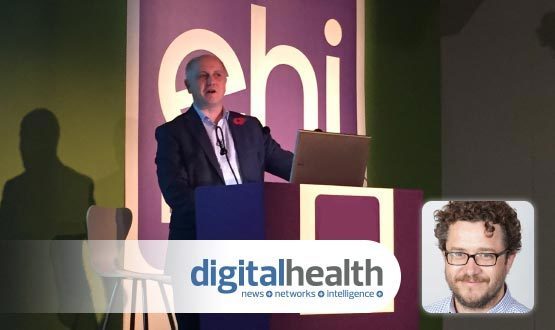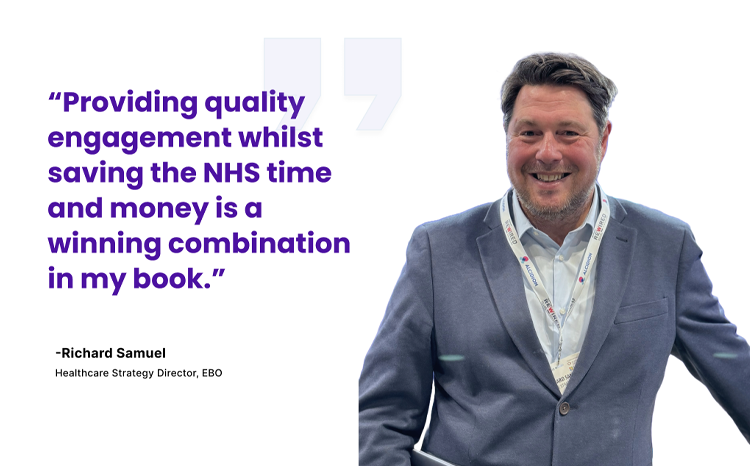What is the digital legacy of Tim Kelsey?
- 26 November 2015

Five years after leaving Dr Foster Intelligence, Tim Kelsey is leaving NHS England to take up a job with the new owners of the company he co-founded; Australian telco Telstra.
After four years as NHS England’s director of patients and information what has been his impact and what will be his legacy? And what type of technology leader does the NHS need next?
Will Kelsey’s tenure of charismatic ‘big ideas’ leadership and ‘blue sky’ thinking on open data have a lasting impact in accelerating the digitisation of health and care, or has he bequeathed a difficult legacy to his successor?
The power of open data
Kelsey, a former Sunday Times journalist, made his name as the champion of the transformative power of open data. Dr Foster Intelligence’s business was based on taking Hospital Episode Statistics data, adding analytics, and selling it the NHS as a service as well as publishing the Good Hospital Guide.
Open data was a concept that politicians, keen on transforming public services through transparency on performance, win praise from peers, avoid action by regulators or secure business by patient choice without spending more money, have been particularly receptive to.
So there was little surprise when, after Kelsey left Dr Foster to join McKinsey, he was promptly loaned back to the Cabinet Office as Transparency Tsar.
And it has been big open data ambitions that have defined his time at NHS England. In particular Care.data, the highly ambitious project to take as much NHS HES and other activity data, and link them with other datasets to create a single secure database.
NHS ‘big data’, it was argued, could then be made available to the NHS and researchers to better understand outcomes and address variations in performance.
It would also provide a national research asset that, with suitable safeguards, would support clinical, life sciences and genomics research and, much more controversially, be commercialized for the benefit of the UK economy.
The logic was, and remains, compelling: that the NHS as a publically funded national service is uniquely well placed use pool its rich data to both better understand outcomes and support clinical trials and medical research.
But the translation of this vision to a viable data asset and service has however been a failure. While politicians enthusiastically supported the concept sections of the medical profession and privacy lobby were alienated.
GPs became increasingly restless as they realised it was GP data that was up first for inclusion in the new service; even though thought they and their patients had been told precious little about it.
Now care.data is on hold, even in pilot areas. Unfortunately, the prime responsibility for this failure lies with Kelsey.
As a man in a hurry Kelsey inadvertently hamstrung Care.data from the outset by over-hyping the project; being both unclear and over-ambitious about its purpose; and at times appearing cavalier or dismissive about information governance and privacy concerns.
This failure to pay supreme attention to the details, and to understand that support had to be built and not assumed, has left Care.data with an uncertain future.
In attempting to reach too far too fast, in a society with a well-known suspicion of national government databases, Kelsey repeated the mistakes that previously stymied the summary care record, and may well have inadvertently set back the cause of creating a national NHS data asset for research.
The realm of ideas
But despite Care.data, which has been extremely bruising for Kelsey personally, it would be wrong to dismiss his record as a failure. There have been notable successes, particularly Patients Online, where 6.6 million patients are now registered for online GP services.
But possibly his most important successes have been in the realms of ideas and committees rather than software and data projects.
For Kelsey the argument is as much moral as managerial or technocratic. He has repeatedly and passionately argued that the health service must embrace information-enabled change and a new relationship with citizens to ‘remain relevant’ and become a progressive ‘social movement’.
A related theme has been to create a vibrant entrepreneurial culture, for start-ups and through Code4health, in its first incarnation, encourage clinicians to write apps. A constant thread has been to encourage people not to accept the status quo and become agents of change.
One key attribute of an effective leader is to inspire people; another is to build a team of talents who are motivated to help you realize shared goals. Those close to Kelsey describe him as a visionary and inspirational leader, fizzing with ideas. On his twitter account @tkelsey1 he describes himself as a jazz musician and entrepreneur.
He’s not your standard NHS mandarin. So it’s ironic that he may have had most influence in the corridors of power and the minutiae of committee meetings.
He enjoys an extremely close relationship with Secretary of State for Health Jeremy Hunt; another man given to sketching out ideas for new web services to save the NHS. Hunt was said to be among illustrious guests at Kelsey’s fiftieth birthday festival, and has been spotted at gigs of Kelsey’s band.
His greatest success has been as an astute political operator, and uber-networker within Whitehall and convincing politicians and the national leadership of DH and NHS England that IT remains critical to addressing the productivity and quality challenges of the health service.
Thanks at least in part to this relationship, the Treasury has been persuaded that technology is key to delivering on the efficiency, quality and access promises that the Conservatives effectively made by backing the ‘Five Year Forward View’ while moving to seven day working. A further £1 billion of investment has just been promised over the next five years.
To have secured this cash, when memories of the National Programme for IT, and its damning NAO reports, is still so fresh in so many minds is a very significant achievement.
Since starting the role he has convincingly argued that digitisation of the NHS will be too patchy and slow unless it is fully embedded into the financial and regulatory apparatus of the system. He has argued that NPfIT was a failure primarily because it was not compulsory for NHS providers and there were no penalties for trusts that failed to implement electronic patient records or share data.
It is this insight: of the need for ownership across the system that underpinned the creation of the National Information Board, chaired by Kelsey, which includes all the regulators, arms length agencies and NHS England leadership.
Although its creation initially looked like the solution to a specific problem – the split between NHS IT policy, commissioning and execution created by the Lansley reforms – the NIB has grown to include all the key players in the leadership of the NHS, including the regulators.
Management blogger Roy Lilley, a notable Kelsey supporter, has described the NIB as “a committee so big you can see it from space”. But it squarely places NHS IT at the heart of the health service, rather than out on the unloved techie archipelago it has too often occupied in the past.
The successor
Committees, of course, come and go but the system’s buy-in looks durable. Kelsey’s successor will need to focus on using the levers it has developed to deliver on policy goals. They will need to effectively support the service in drawing up and delivering local digital strategies that deliver clear measurable benefits.
They will need to help the service finally deliver integrated health and social care records; go paperless at the point of care; and above all harness enterprise IT to drive major productivity improvements.
There will still be a place for politician and headline friendly, patient-facing ideas. But the next leader of NHS IT really needs to be someone who understands the productivity agenda, how the system works, and has a proven track record of delivering complex technology-led change programmes.
This paragon must be able to fend off the crazier demands of politicians, while still prising further money from Treasury. They must speak fluent mandarin, spout DH jargon with the best of them, be a partner to suppliers and support entrepreneurs. They also need to know when to leave well alone. The development of digital road maps has a risk of turning into micro-management and picking winners.
Above all Kelsey’s successor must be an effective ally to support local leaders through the many hard yards ahead to realize the benefits of digitally enabled health and social care for everyone. They need to be as relentlessly focused on the nuts and bolts of delivery as Kelsey was on ideas.
There is an outline of a clear plan to 2020, the key job of the next leader of technology at NHS England is to give local NHS leaders in trusts and commissioners the support and tools they need to deliver.
(an earlier edit of this feature was mistakenly published by Digital Health News and was replaced at 18.00)




